Asymmetric Michael Addition Mediated by Chiral Ionic Liquids
- PMID: 29861702
- PMCID: PMC5925874
- DOI: 10.2174/1570193X15666171211165344
Asymmetric Michael Addition Mediated by Chiral Ionic Liquids
Abstract
Chiral ionic liquids with a focus on their applications in asymmetric Michael additions and related reactions were reviewed. The examples were classified on the basis of the mode of asymmetric induction (e.g., external induction/non-covalent interaction or internal induction/covalent bond formation), the roles in reactions (as a solvent or catalyst), and their structural features (e.g., imidazolium-based chiral cations, other chiral oniums; proline derivatives). Most of the reactions with high chiral induction are Michael addition of ketones or aldehydes to chalcones or nitrostyrenes where proline-derived chiral ionic liquids catalyze the reaction through enamine/ iminium formation. Many reports demonstrate the recyclability of ionic liquid-tagged pyrrolidines.
Keywords: Chiral ionic liquid; Michael addition; asymmetric reaction; catalysts; chiral solvent; imidazole ionic liquid.
Figures

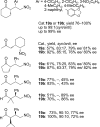







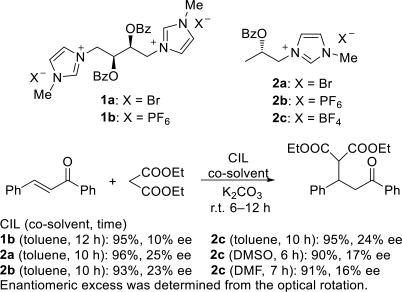

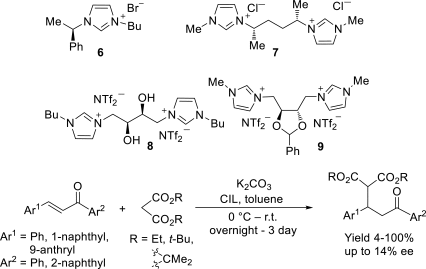
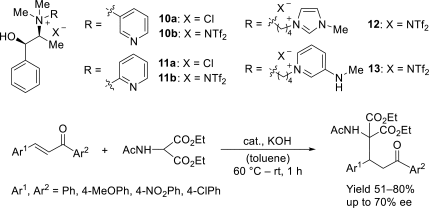
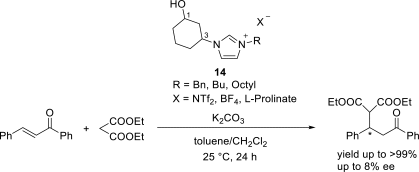



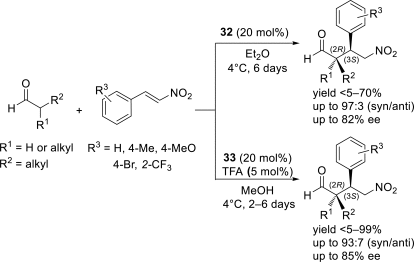

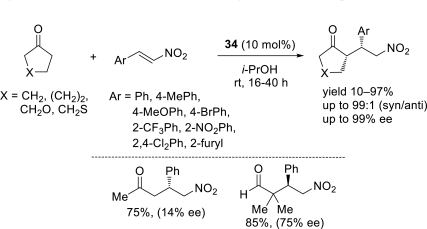

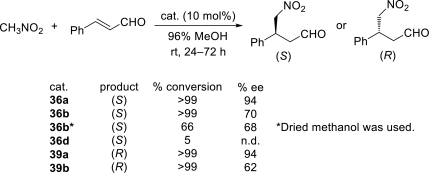


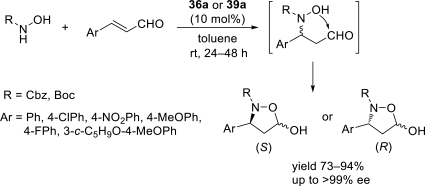
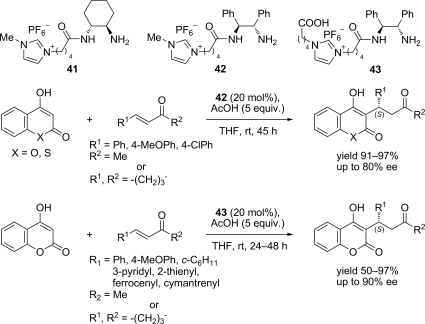
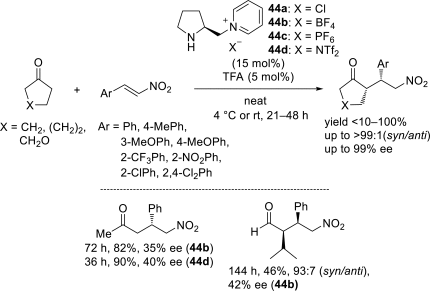
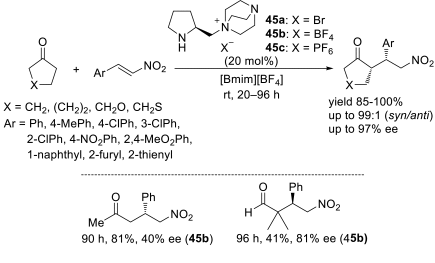
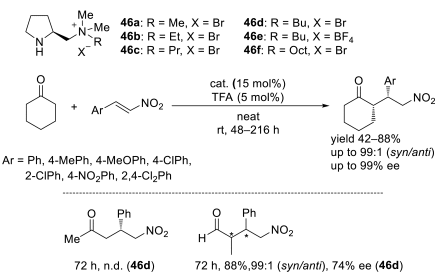
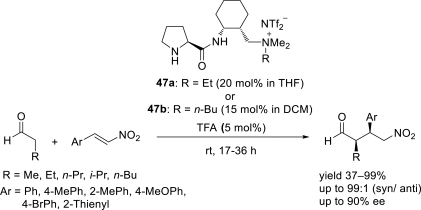


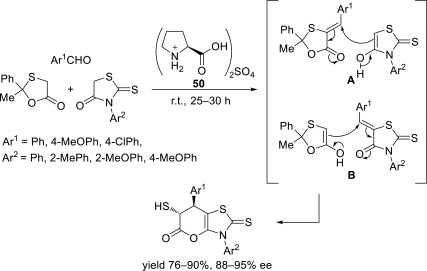
Similar articles
-
Catalytic asymmetric organozinc additions to carbonyl compounds.Chem Rev. 2001 Mar;101(3):757-824. doi: 10.1021/cr000411y. Chem Rev. 2001. PMID: 11712502 Review.
-
Combined Role of the Asymmetric Counteranion-Directed Catalysis (ACDC) and Ionic Liquid Effect for the Enantioselective Biginelli Multicomponent Reaction.J Org Chem. 2018 Oct 5;83(19):12143-12153. doi: 10.1021/acs.joc.8b02101. Epub 2018 Sep 13. J Org Chem. 2018. PMID: 30160956
-
Enantioselective Carbonyl 1,2- or 1,4-Addition Reactions of Nucleophilic Silyl and Diazo Compounds Catalyzed by the Chiral Oxazaborolidinium Ion.Acc Chem Res. 2019 Aug 20;52(8):2349-2360. doi: 10.1021/acs.accounts.9b00279. Epub 2019 Jul 17. Acc Chem Res. 2019. PMID: 31314494
-
Functionalized chiral ionic liquid catalyzed enantioselective desymmetrizations of prochiral ketones via asymmetric Michael addition reaction.J Org Chem. 2007 Nov 23;72(24):9350-2. doi: 10.1021/jo7020357. Epub 2007 Nov 2. J Org Chem. 2007. PMID: 17975933
-
Functionalized chiral ionic liquids: a new type of asymmetric organocatalysts and nonclassical chiral ligands.Chem Asian J. 2009 Aug 3;4(8):1184-95. doi: 10.1002/asia.200900080. Chem Asian J. 2009. PMID: 19533671 Review.
Cited by
-
Isothiourea-catalysed enantioselective Michael addition of N-heterocyclic pronucleophiles to α,β-unsaturated aryl esters.Chem Sci. 2019 Oct 23;11(1):241-247. doi: 10.1039/c9sc04303a. Chem Sci. 2019. PMID: 34040717 Free PMC article.
-
Unusual Reactivities of ortho-Hydroxy-β-nitrostyrene.Molecules. 2022 Jul 27;27(15):4804. doi: 10.3390/molecules27154804. Molecules. 2022. PMID: 35956754 Free PMC article.
References
-
- Earle M.J., McCormac P.B., Seddon K.R. Diels-Alder reactions in ionic liquids. A safe recyclable alternative to lithium perchlorate-diethyl ether mixtures. Green Chem. 1999;1(1):23–25.
-
- Baudequin C., Bregeon D., Levillain J., Guillen F., Plaquevent J-C., Gaumont A-C. Chiral ionic liquids, a renewal for the chemistry of chiral solvents? Design, synthesis and applications for chiral recognition and asymmetric synthesis. Tetrahedron Asymmetry. 2005;16(24):3921–3945.
-
- Ding J., Armstrong D.W. Chiral ionic liquids: Synthesis and applications. Chirality. 2005;17(5):281–292. - PubMed
-
- Headley A.D., Ni B. Chiral imidazolium ionic liquids: Their synthesis and influence on the outcome of organic reactions. Aldrichim Acta. 2007;40(4):107–117.
-
- Chen X., Li X.I., Hu A., Wang F. Advances in chiral ionic liquids derived from natural amino acids. Tetrahedron Asymmetry. 2008;19(1):1–14.
Publication types
LinkOut - more resources
Full Text Sources
Other Literature Sources
